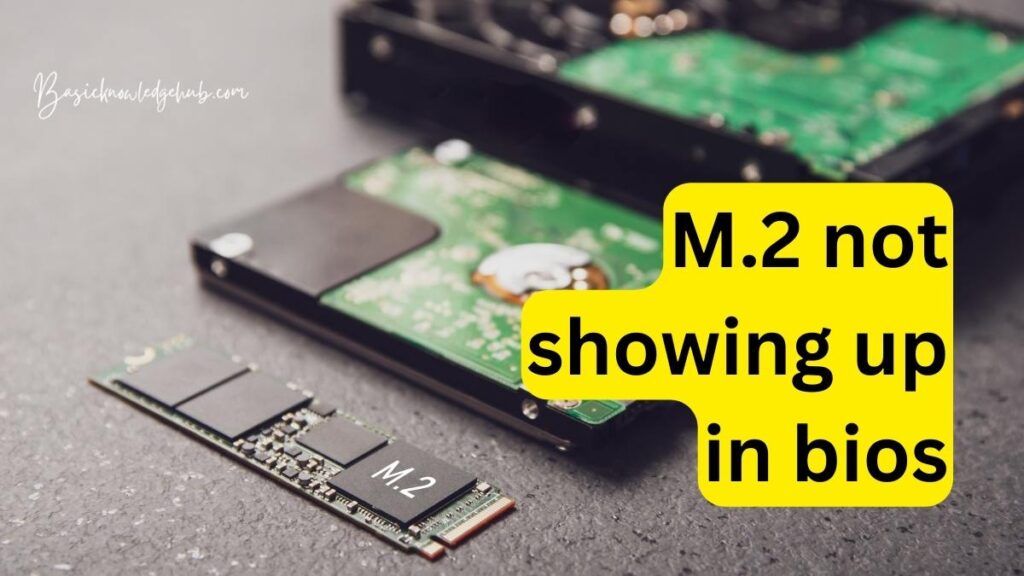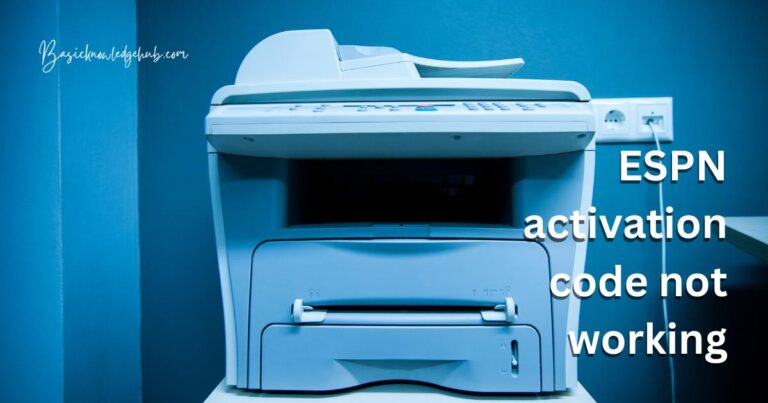M.2 not showing up in bios
Modern PCs have rapidly evolved, offering faster speeds and higher storage capacities than ever before. One such innovation is the M.2 SSD, a compact and high-performance storage solution. However, encountering the issue of an M.2 drive not showing up in the BIOS can be frustrating. In this comprehensive guide, we will delve into the potential reasons behind this problem and provide step-by-step solutions to help you get your M.2 drive recognized by the BIOS once again. Whether you’re a tech enthusiast, a gamer, or a professional, this guide will empower you to overcome this issue and make the most of your cutting-edge storage hardware.

Common Reasons Why Your M.2 SSD Might Not Show Up in BIOS
When your M.2 SSD refuses to appear in the BIOS, frustration can set in quickly. Understanding the underlying reasons for this issue is the first step toward resolution. Here are some potential culprits:
- 1. Loose Connection: Sometimes, the issue can be as simple as a loose connection. If the M.2 SSD isn’t properly seated in its slot, it won’t be detected by the BIOS. A secure connection is crucial.
- 2. Compatibility Issues: Your motherboard and M.2 SSD might not play well together due to compatibility issues. Outdated BIOS versions or hardware mismatches could lead to the drive not being recognized.
- 3. Drive and Slot Type Mismatch: M.2 slots come in two flavors: SATA and PCIe. Using a drive that doesn’t match the slot type will result in it not showing up. Ensure compatibility between the drive and slot.
- 4. Driver and Firmware Problems: Outdated or missing drivers and firmware can hinder communication between the M.2 SSD and the system. Keeping these up-to-date is essential.
- 5. BIOS Settings: Incorrect BIOS settings can prevent the M.2 SSD from being detected. Ensuring that the slot is enabled and that the correct mode (AHCI or NVMe) is selected is crucial.
- 6. Physical Damage: Any physical damage to the M.2 SSD or the motherboard itself can disrupt the connection, causing the drive to go unnoticed by the BIOS.
Now that you’re aware of the potential reasons behind the M.2 SSD not showing up in the BIOS, you’re better equipped to troubleshoot and address the issue effectively.
Don’t miss: There was an error connecting to the apple id server
How to fix M.2 SSD not showing up in BIOS?
Fix 1: Recheck Installation and Secure Connection
If your M.2 SSD isn’t showing up in the BIOS, a loose or improper installation could be the root cause. Follow these steps to ensure a secure connection:
- Power Off and Unplug: Begin by shutting down your computer and disconnecting all power sources. Safety first!
- Access the M.2 Slot: Open your computer case to access the M.2 slot on your motherboard. Take precautions against static electricity by grounding yourself.
- Remove the M.2 SSD: Gently remove the M.2 SSD from the slot by pushing it down slightly and then lifting it out.
- Inspect the Slot: Take a moment to inspect the M.2 slot for any debris or foreign objects that could hinder proper installation. Use compressed air or a soft brush to clean if needed.
- Check the M.2 SSD: Inspect the M.2 SSD for any visible damage or bent pins. Any physical deformities could cause connectivity issues.
- Reinsert the M.2 SSD: Align the notches on the M.2 SSD with the slot and gently slide it in at a slight angle. Press down firmly until the SSD clicks into place.
- Secure with Screw: Some motherboards require securing the M.2 SSD with a small screw. If needed, carefully attach the screw to hold the SSD securely in place.
- Close the Case: Put the computer case back together, making sure all components are properly aligned and connected.
- Power On and Check BIOS: Reconnect the power sources and power on your computer. Access the BIOS during startup and check if the M.2 SSD is now detected.
This simple yet crucial step of rechecking the installation can often resolve the issue of the M.2 SSD not showing up in the BIOS. By ensuring a secure and proper connection, you eliminate one of the common causes of the problem. If the issue persists after following these steps, proceed to explore other potential solutions.
Fix 2: Update BIOS for Improved Compatibility
Outdated BIOS versions can lead to compatibility issues, causing your M.2 SSD to remain undetected. Updating the BIOS can often resolve this problem. Here’s how:
- Identify Your Motherboard Model: Refer to your motherboard’s manual or its packaging to find the exact model number. This information is usually located near the CPU socket or on the motherboard’s surface.
- Visit the Manufacturer’s Website: Use a web browser to navigate to the official website of your motherboard’s manufacturer. Look for a “Support” or “Downloads” section.
- Download the Latest BIOS Update: Locate the BIOS update for your specific motherboard model. Be sure to choose the correct version and download it to your computer.
- Create a Bootable USB Drive: Some motherboards allow you to update the BIOS using a USB drive. Follow the manufacturer’s instructions to create a bootable USB drive with the downloaded BIOS update.
- Backup Important Data: Before proceeding with the BIOS update, ensure you have backed up any critical data on your computer. BIOS updates carry a minimal risk, but it’s always wise to be cautious.
- Restart Your Computer: Insert the bootable USB drive into a USB port on your computer. Restart the computer and enter the BIOS settings by pressing the designated key (often Del or F2) during startup.
- Access the BIOS Update Tool: Once in the BIOS settings, navigate to the “Advanced” or “Tools” section. Look for an option that allows you to update the BIOS. This might be labeled differently depending on the motherboard manufacturer.
- Select the BIOS Update File: Choose the BIOS update file you downloaded from the manufacturer’s website. Follow the on-screen instructions to initiate the update process.
- Wait Patiently: The BIOS update process may take several minutes. Do not turn off your computer or interrupt the process during this time.
- Restart and Check M.2 Detection: After the BIOS update is complete, your computer will restart. Access the BIOS settings again and check if the M.2 SSD is now detected. Make sure to enable the M.2 slot if necessary.
Updating the BIOS can improve compatibility and fix compatibility-related issues, which may be causing your M.2 SSD to not show up in the BIOS. If this fix doesn’t resolve the problem, there are still more steps to explore to get your M.2 SSD recognized by the BIOS.
Fix 3: Verify Drive and Slot Compatibility
Mismatch between the type of M.2 drive and the slot it’s connected to can lead to detection problems. Ensuring compatibility between the drive and slot is crucial. Here’s how to do it:
- Identify M.2 Drive Type: Determine whether your M.2 SSD is a SATA or PCIe (NVMe) drive. This information is usually mentioned in the drive’s specifications or packaging.
- Identify M.2 Slot Type: Check your motherboard’s manual to identify the type of M.2 slot(s) it has. The manual will mention whether the slot supports SATA, PCIe, or both.
- Check Compatibility: Cross-reference the M.2 drive type with the slot type. For example, an NVMe PCIe M.2 drive won’t work in a SATA M.2 slot. Ensure they match.
- Upgrade If Necessary: If your M.2 drive and slot types don’t match, you might need to upgrade either the drive or the motherboard to ensure compatibility.
- Check Slot Keying: M.2 slots also have different keying configurations (notches) that prevent inserting incompatible drives. Make sure the notches on your drive and slot align.
- Consult Manufacturer Documentation: If you’re unsure about compatibility, refer to the documentation provided by both the M.2 drive and motherboard manufacturers.
- Explore Adapter Cards: If your motherboard lacks the required M.2 slot type, you can explore adapter cards that allow you to use the M.2 drive with a different interface.
- Reinstall If Necessary: If you determine that the M.2 drive and slot are incompatible, you may need to reinstall the original storage device while considering future upgrades.
Verifying drive and slot compatibility ensures that your M.2 SSD can communicate effectively with the motherboard, eliminating one potential cause of it not being detected in the BIOS. If compatibility isn’t the issue, there are still more steps to explore to address the problem.
Fix 4: Check for Driver and Firmware Updates
Outdated or missing drivers and firmware can hinder proper communication between your M.2 SSD and the system, causing it to remain invisible in the BIOS. Updating these components can often resolve the issue. Follow these steps to check for updates:
- Visit the Manufacturer’s Website: Go to the official website of your M.2 SSD’s manufacturer. Navigate to the “Support” or “Downloads” section.
- Identify Your Drive Model: Locate your M.2 SSD’s model number. This information is usually printed on the drive itself or mentioned in its packaging.
- Check for Updates: Search for driver and firmware updates specifically for your drive model. Download the latest versions available.
- Install Drivers: Install the downloaded driver update by following the manufacturer’s instructions. This might involve running an installer or updating the driver manually through Device Manager (Windows).
- Update Firmware: Updating firmware might involve creating a bootable USB drive or using specialized software provided by the manufacturer. Follow the instructions closely.
- Restart Your Computer: After updating the drivers and firmware, restart your computer to apply the changes.
- Access BIOS Again: During startup, access the BIOS settings and check if your M.2 SSD is now detected. Make sure to enable the M.2 slot if necessary.
- Verify Functionality: Additionally, check if your operating system recognizes the M.2 SSD once you’ve booted into it.
By keeping your drivers and firmware up to date, you ensure optimal compatibility and performance between your M.2 SSD and your system. If this fix doesn’t resolve the issue, there are still further steps you can take to troubleshoot the problem.
Fix 5: Verify BIOS Settings
Incorrect BIOS settings can prevent your M.2 SSD from being recognized by the system. Ensuring the right configuration is essential for proper detection. Here’s how to verify your BIOS settings:
- Restart and Access BIOS: Restart your computer and enter the BIOS settings by pressing the designated key (usually Del or F2) during startup.
- Navigate to Storage Configuration: Look for a section related to storage or drives in the BIOS settings. The location and labels might vary depending on your motherboard’s manufacturer.
- Check M.2 Slot Status: Ensure that the M.2 slot in which your SSD is installed is enabled. If it’s disabled, you won’t see the drive in the BIOS.
- Select Correct Mode: Depending on your M.2 SSD type (SATA or NVMe), choose the appropriate mode – AHCI for SATA or NVMe for PCIe – in the BIOS settings.
- Save Changes and Exit: If you’ve made any changes, remember to save them before exiting the BIOS. This usually involves selecting the “Save and Exit” or similar option.
- Restart and Check: After saving changes, your computer will restart. Access the BIOS settings again to verify that the changes you made are saved and that the M.2 SSD is now detected.
- Boot into OS: Once your M.2 SSD is detected, make sure your operating system recognizes it as well. You can do this by checking the disk management utility.
Verifying and adjusting BIOS settings can often bring your M.2 SSD back into the spotlight. If this solution doesn’t resolve the issue, there are still more avenues to explore to get your M.2 SSD recognized by the BIOS.
Fix 6: Inspect for Physical Damage
Physical damage to either the M.2 SSD or the motherboard can lead to connectivity issues, causing the M.2 SSD to go undetected. Carefully inspecting both components can help identify potential damage. Here’s how to proceed:
- Power Off and Unplug: Prior to any inspection, power off your computer and disconnect all power sources for safety.
- Access the M.2 Slot: Open your computer case and access the M.2 slot on your motherboard. Make sure you’re grounded to prevent static discharge.
- Examine the M.2 SSD: Carefully remove the M.2 SSD from the slot and inspect it for any visible damage. Look for signs of bent pins, cracks, or physical deformities.
- Inspect the Motherboard: Thoroughly inspect the M.2 slot on the motherboard for any damage or foreign objects that could hinder proper connection.
- Check Other Components: While you’re at it, visually examine the surrounding components, connectors, and circuitry for any signs of damage.
- Secure the SSD: If the M.2 SSD appears to be undamaged, securely reinsert it into the slot and ensure it clicks into place.
- Close the Case: Carefully put the computer case back together, ensuring that all components are properly aligned and connected.
- Power On and Check: Reconnect the power sources, power on your computer, and access the BIOS to check if the M.2 SSD is now detected.
If you find any physical damage to either the M.2 SSD or the motherboard, it might be necessary to replace the damaged component to restore proper connectivity. Conducting this inspection can eliminate physical issues as a potential cause for the M.2 SSD not showing up in the BIOS.
Fix 7: Update System BIOS
Updating the system BIOS can often resolve compatibility issues and improve hardware detection, including your M.2 SSD. Here’s how to update your BIOS:
- Visit Motherboard Manufacturer’s Website: Go to the official website of your motherboard manufacturer.
- Locate BIOS Updates: Find the “Support” or “Downloads” section and search for BIOS updates for your specific motherboard model.
- Download the Update: Download the latest BIOS update version compatible with your motherboard.
- Create a Bootable USB: Some BIOS updates require a bootable USB drive. Follow the manufacturer’s instructions to create one with the BIOS update.
- Backup Important Data: Before updating the BIOS, ensure critical data is backed up. While the risk is low, it’s always better to be safe.
- Restart and Access BIOS: Insert the bootable USB drive and restart your computer. Access the BIOS settings by pressing the designated key during startup.
- Perform the Update: In the BIOS settings, find the option to update the BIOS. Choose the update file from the USB drive and follow the on-screen instructions.
- Wait Patiently: The update process may take several minutes. Do not interrupt it or turn off your computer during this time.
- Restart and Check: After the update is complete, your computer will restart. Access the BIOS settings again to verify that the update was successful and that the M.2 SSD is now detected.
Updating the BIOS can bring improved compatibility and stability to your system, which can help in resolving issues like an M.2 SSD not showing up in the BIOS. If this fix doesn’t resolve the problem, it’s worth considering further investigation or seeking professional assistance.
Fix 8: Seek Professional Help
If you’ve followed the previous fixes and your M.2 SSD is still not showing up in the BIOS, it might be time to seek professional assistance. Certain issues might require advanced troubleshooting or hardware replacement, and consulting an expert can save you time and effort. Here’s what you can do:
- Contact Manufacturer Support: Reach out to the manufacturer of your M.2 SSD and your motherboard. Their technical support teams can provide guidance tailored to your specific hardware.
- Visit a Computer Repair Shop: Professional technicians at computer repair shops are equipped to diagnose and address hardware-related issues. They can identify potential problems and suggest appropriate solutions.
- Consult Online Communities: Forums and communities dedicated to computer hardware and troubleshooting can be valuable resources. Experienced users might provide insights or solutions you haven’t considered.
- Consider Warranty: If your M.2 SSD or motherboard is still under warranty, contacting the manufacturer for a replacement or repair might be the best course of action.
- Back Up Data: Before seeking professional help, ensure you’ve backed up any critical data from your computer to prevent data loss during troubleshooting or repairs.
If the issue is complex or beyond your expertise, remember that seeking professional help is a wise decision. Technical experts can diagnose the problem accurately and provide appropriate solutions, allowing you to get your M.2 SSD up and running without further frustration.
Preventing M.2 SSD Detection Issues: Proactive Tips
Experiencing an M.2 SSD not showing up in the BIOS can be frustrating, but taking preventive measures can help you avoid such issues in the future. Here are some proactive tips to ensure a smooth experience with your M.2 SSD:
- 1. Choose Compatible Components: When purchasing an M.2 SSD and a motherboard, ensure they are compatible in terms of slot type (SATA or PCIe) and interface (AHCI or NVMe).
- 2. Read the Manuals: Familiarize yourself with the manuals of your M.2 SSD and motherboard. Understanding installation and configuration guidelines can prevent mistakes.
- 3. Install Carefully: During installation, handle the M.2 SSD and motherboard components with care. Avoid applying excessive force or bending pins.
- 4. Regularly Update Drivers and Firmware: Keep your M.2 SSD drivers and firmware up to date by checking the manufacturer’s website periodically.
- 5. Stay Up-to-Date with BIOS: Regularly check for BIOS updates on your motherboard manufacturer’s website. Updated BIOS versions often enhance compatibility.
- 6. Maintain Good Static Practices: When handling hardware components, use proper anti-static precautions to prevent damage from electrostatic discharge.
- 7. Keep Backups: Regularly back up important data to prevent data loss in case of hardware issues or failures.
- 8. Document Changes: Before making changes to your system configuration, document the settings so you can revert to them if needed.
- 9. Monitor System Health: Use monitoring tools to keep an eye on the health of your hardware components, including the M.2 SSD.
- 10. Seek Professional Help: If you’re unsure about installation, updates, or troubleshooting, don’t hesitate to seek professional assistance.
By implementing these preventive tips, you can reduce the likelihood of encountering an M.2 SSD detection issue in the future. Taking proactive steps ensures a reliable and efficient computing experience while maximizing the potential of your hardware investments.
Conclusion
In the world of computing, encountering issues is part of the journey, but with the right knowledge and guidance, you can overcome them. This guide has equipped you with insights into why your M.2 SSD might not show up in the BIOS and how to fix it. From installation checks to firmware updates and BIOS settings adjustments, each step has been detailed to ensure you have a smooth troubleshooting experience. By following these steps, you can get your M.2 drive up and running, enjoying the lightning-fast performance it promises. Remember, patience and attention to detail are key as you work through each solution. Happy troubleshooting and happy computing!
FAQs
Loose connections, compatibility problems, outdated drivers, or damaged components might be causing this.
Power off, reinsert the M.2 SSD, ensure it clicks, and secure it with a screw if needed.
Yes, outdated BIOS might lead to compatibility problems. Updating BIOS can often resolve the issue.
Ensure compatibility between the M.2 drive type (SATA/NVMe) and the slot type (SATA/PCIe).
Visit the manufacturer’s website, download the updates, and follow instructions for installation.


